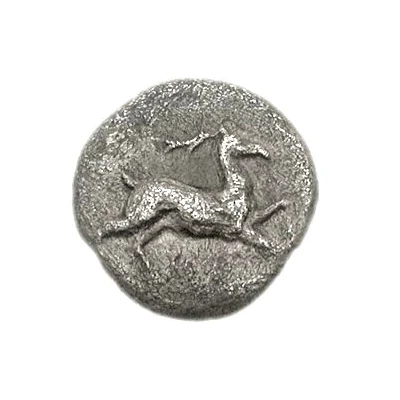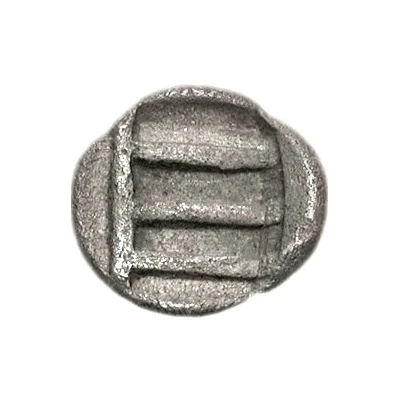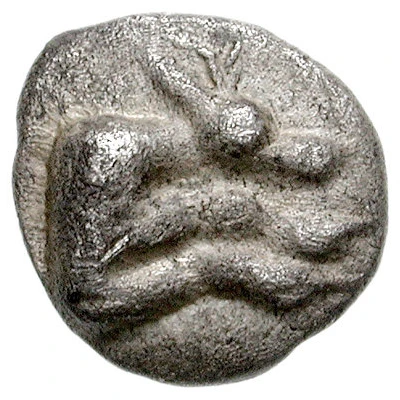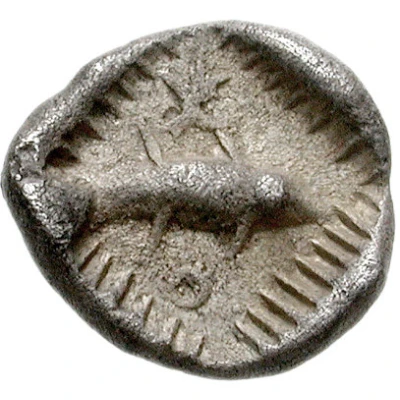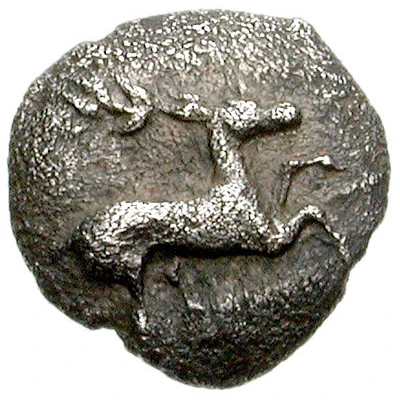
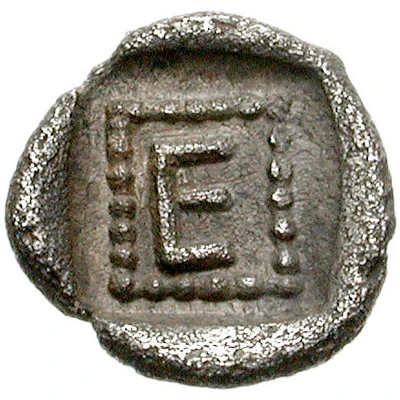

© Classical Numismatic Group, Inc.
Hemiobol 470 BC - 440 BC
| Silver | 0.43 g | 9.0 mm |
| Issuer | Psophis (Arkadia) |
|---|---|
| Type | Standard circulation coin |
| Years | 470 BC - 440 BC |
| Value | Hemiobol (1⁄12) |
| Currency | Drachm |
| Composition | Silver |
| Weight | 0.43 g |
| Diameter | 9.0 mm |
| Shape | Round (irregular) |
| Technique | Hammered, Incuse |
| Demonetized | Yes |
| Updated | 2024-10-09 |
| Numista | N#144771 |
|---|---|
| Rarity index | 100% |
Reverse
Large E within pelleted border in incuse square
Script: Greek
Interesting fact
The Hemiobol coin from Psophis (Arkadia) was used as a form of currency in ancient Greece during the 5th century BC. It was made of silver and weighed approximately 0.43 grams. Despite its small size, this coin played a significant role in the economy of the time, as it was used to purchase everyday items such as food, clothing, and other necessities. The coin's design featured an image of a mythical creature called a "griffin," which was a symbol of protection and strength in ancient Greek culture. Today, the Hemiobol coin is a valuable collector's item and a fascinating piece of history.
